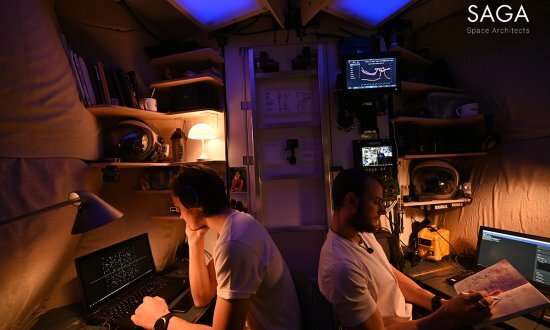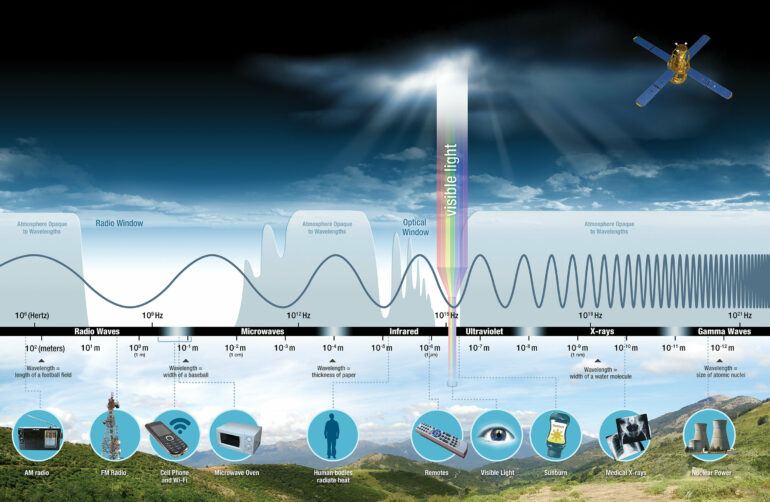Researchers at the University of Surrey and the University of Milano-Bicocca have partnered with SAGA Space Architects to investigate the psychological impact of social isolation in harsh environments, such as on the moon. This research formed part of the LUNARK project which explored how humans could survive on the moon and have successful habitats there in the future.
The LUNARK project was the first ever Arctic simulation of a lunar mission. As part of the project, two space architects, Sebastian Aristotelis and Karl-Johan Sørensen, designed an airtight, portable, foldable pod that enables its occupants to live self-sufficiently. From September 2020, the architects lived inside the pod for 61 days in northern Greenland—a place that reflects the harsh environment of the moon and its freezing temperatures. The pod was built to withstand external threats—which was tested in the arctic simulation in the form of a visit from a local polar bear—and was designed to leave no trace of waste in the environment.
To investigate the impact of social isolation on the men, the researchers measured their perceptions of time, their positive and negative emotions, levels of satisfaction of basic psychological needs (e.g. self-esteem and control), behavioral intentions (for example, whether they developed aggressive tendencies) and coping strategies. To record this data, Sebastian and Karl-Johan kept daily diaries and completed a 20-minute questionnaire daily.

© University of Surrey
Konstantin Chterev, Psychology Ph.D. student at Surrey and co-author of the study, said:
“Research to address the technical challenges of human missions into space is growing at a rapid rate. Therefore, it is critical that we explore the social-psychological aspects of individuals’ experiences of confinement within these habitats. We know that social isolation is among one of the main risk factors in these environments, but we still have a lot to learn.”
The two space architects were limited in how much they could communicate with the outside world. They had no access to the internet but could use a satellite phone to send daily messages (up to 160 characters) to the headquarters in Copenhagen, Denmark.
The results showed that, for both space architects, their desire for social contact increased over time, whereas negative feelings of alienation, depression, helplessness, and unworthiness did not. Talking about personal matters and engaging in leisure time was associated with a decrease in these negative feelings, but also increased the desire for social contact. Furthermore, engaging in leisure activities increased the perceived speed of time.
“Space travel will likely become more frequent in the next few decades, due to the opening of the private market, NASA’s plans to send people to the moon this decade, and government agencies in China and India joining the space travel race. With more organizations involved in sending people to space, we need more studies to focus on the mental health impacts involved in long missions in extreme and confined environments. Work like this will be able to inform future training and the planning of schedules in extreme environment expeditions and lunar missions, in which it is crucial to balance mission-critical tasks and physical well-being with protecting psychological well-being and mitigating the negative effects of long-term isolation.”
More information:
Paolo Riva et al, Social isolation in space: An investigation of LUNARK, the first human mission in an Arctic Moon analog habitat, Acta Astronautica (2022). DOI: 10.1016/j.actaastro.2022.03.007
Provided by
University of Surrey
Citation:
Arctic simulation of moon-like habitat shows well-being sessions can improve mental health in extreme isolation (2022, April 5)



